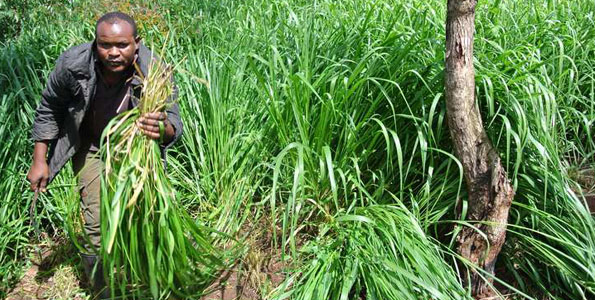
Siaya County farmers have tripled milk yields by feeding livestock on brachiaria grass, which contains more proteins than Napier .
Leonard Oremo noted significant increase in milk soon after he introduced the grass as part of the fodder for his cattle.
In the past, Oremo got three litres of milk per day, but the yield has increased to 10 litres per day, the farmer told the Voice of America, adding that at times the yield hits 12 litres.
Brachiaria grass has more than 15 per cent crude proteins and other minerals, which are necessary in milk production.
Napier grass has between 7 per cent and 8.5 per cent crude proteins. However, a new variety like giant Napier grass has surpassed this mark by offering up to 26 per cent crude proteins to livestock.
READ ALSO: High protein double yielding napier grass released
READ ALSO: Farmers embrace Rhodes grass to fight climate change
International Livestock Research Institute (ILRI) researcher An Notenbaert said the grass is not only appropriate for low rainfall regions, but a sure feed security solution.
According to Feedpedia, an animal feeds resource repository, the grass does well in regions with rainfall of between 1500mm and 3500mm per annum. But it can withstand drought for between three and six months, within which it remains green, unlike other tropical grasses.
It also grows in poor and nitrogen and other nutrients’ deficient soils and a PH of between 4 and 8. Although it does well in low nutrient area, the content reduces with decrease in the elements.
Fro those interested in the grass, contact Benson Muturi of Kenya Agricultural and Livestock Research Organisation on +254724492456.
















Comments powered by CComment